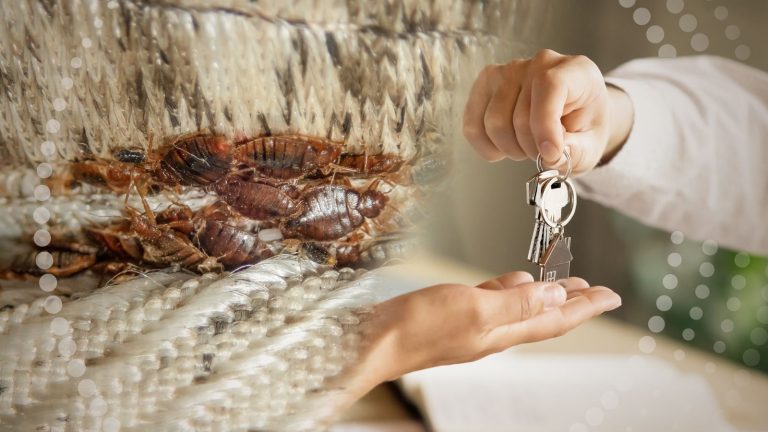Why are rental apartments such easy targets for bed bugs? The constant flow of tenants and close living spaces makes it simple for these pests to spread quickly from one unit to another.
That’s why knowing how to check for bed bugs is so important. It also gives you the power to spot problems early and stop them from worsening. Keep reading to learn practical steps that will help you protect your health and your home.
Why Renters Should Know How to Check for Bed Bugs
Learning to check for bed bugs plays a key role in keeping renters healthy and financially secure. The following reasons explain why early detection is so important:
- Preventing costly extermination: Detecting bed bugs early reduces the need for expensive treatments and helps avoid disputes with landlords over responsibility.
- Protecting health: Bed bug bites often cause irritation, redness, and itching, which may lead to secondary skin issues if scratched.
- Avoiding sleep disturbances: Infestations frequently disrupt sleep and create stress, affecting daily performance and overall well-being.
Preparing to Inspect an Occupied Apartment
Preparation ensures accuracy while respecting tenants’ space when inspecting an occupied apartment. The following items are essential for carrying out a thorough inspection:
- Flashlight: Use it to examine dark corners, mattress seams, and furniture joints where bed bugs often hide.
- Gloves: Wear them to protect your hands while handling bedding, furniture, or suspected evidence of infestation.
- Magnifying glass: Rely on it to spot tiny bed bugs, eggs, or shed skins that may be difficult to see with the naked eye.
- Sealable bags: Keep them ready to collect samples or secure infested items without spreading pests.
Since inspections happen in living spaces, it is essential to work carefully and avoid disrupting routines. With good preparation, you can keep the process smooth and get accurate results when deciding how to check for bed bugs effectively.
How to Check for Bed Bugs in Common Infestation Spots
Practicing how to check for bed bugs helps renters catch signs of trouble before they worsen. During an inspection, ensure to examine these areas:
- Mattresses and box springs: Inspect seams, tufts, and folds for live bugs, dark droppings, or shed skins.
- Bed frames and headboards: Look at joints, cracks, and screw holes where bed bugs often hide near sleeping areas.
- Baseboards and floor edges: Check along edges and small gaps where pests can travel between rooms.
- Electrical outlets and switch plates: Shine a flashlight around and inside covers to spot hidden activity.
- Behind wall hangings: Remove and examine pictures, mirrors, and other décor that provide concealed spaces.
Subtle Warning Signs to Watch For When Checking
Understanding how to check for bed bugs means knowing the less obvious indicators that signal an infestation. The following warning signs can appear before a problem becomes severe:
- Spotting: Look for small dark marks on sheets, mattresses, and furniture seams, often indicating bed bug droppings.
- Shed skins: Watch for translucent shells that bed bugs shed as they grow. They often hide in bedding or furniture crevices.
- Minor blood stains: Look for reddish streaks on sheets and pillowcases, which occur when you accidentally crush bed bugs.
- Unusual odors: Be alert to sweet or musty smells in infested areas, as these odors may point to a growing presence.
By recognizing these subtle signs, renters can act early to address infestations and reduce the risk of further spread.
How to Check for Bed Bugs Without Spreading Them
Effective bed bug checks should always prevent further spread. Consider the following steps to help contain possible infestations during an inspection:
- Isolate suspected items: Place potentially infested belongings in sealable plastic bags until you confirm their presence.
- Limit movement of belongings: Keep clothing and furniture in place to prevent pests from transferring to other rooms.
- Notify the landlord: Report any evidence promptly to ensure treatment begins quickly and to avoid responsibility disputes.
- Contact a professional exterminator: Arrange for a licensed pest control service to effectively confirm and address the infestation.
By following these steps, renters minimize the risk of spreading pests while handling the problem quickly and responsibly.
Inspect and Protect Your Space!
Conclusively, reinforcing the habit of learning how to check for bed bugs is key to keeping renters safe and worry-free. With the proper preparation, a close look at common hiding spots, and attention to warning signs, you can stop an infestation before it grows. Don’t wait until it’s too late—schedule a professional inspection today, and if you want expert guidance, the best way is to learn how to check bed bugs fast in your rental properties.

